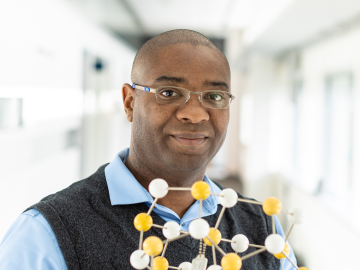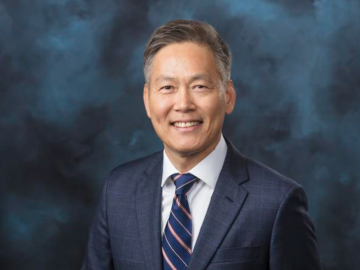
Filter News
Area of Research
- (-) Materials (149)
- (-) Neutron Science (39)
- (-) Quantum information Science (1)
- Advanced Manufacturing (23)
- Biology and Environment (33)
- Building Technologies (1)
- Clean Energy (157)
- Computational Engineering (1)
- Computer Science (3)
- Electricity and Smart Grid (3)
- Functional Materials for Energy (2)
- Fusion and Fission (9)
- Fusion Energy (3)
- Isotope Development and Production (1)
- Isotopes (5)
- Materials Characterization (2)
- Materials for Computing (21)
- Materials Under Extremes (1)
- Mathematics (1)
- National Security (22)
- Nuclear Science and Technology (6)
- Sensors and Controls (2)
- Supercomputing (36)
- Transportation Systems (1)
News Topics
- (-) 3-D Printing/Advanced Manufacturing (27)
- (-) Clean Water (4)
- (-) Composites (9)
- (-) Fossil Energy (1)
- (-) Grid (6)
- (-) Materials (80)
- (-) Materials Science (87)
- (-) Security (3)
- Advanced Reactors (5)
- Artificial Intelligence (12)
- Big Data (3)
- Bioenergy (16)
- Biology (9)
- Biomedical (17)
- Biotechnology (1)
- Buildings (5)
- Chemical Sciences (33)
- Climate Change (5)
- Computer Science (30)
- Coronavirus (11)
- Critical Materials (13)
- Cybersecurity (7)
- Decarbonization (9)
- Energy Storage (38)
- Environment (21)
- Exascale Computing (2)
- Frontier (4)
- Fusion (8)
- High-Performance Computing (6)
- Irradiation (1)
- Isotopes (13)
- ITER (1)
- Machine Learning (7)
- Mathematics (1)
- Microscopy (29)
- Molten Salt (3)
- Nanotechnology (44)
- National Security (4)
- Net Zero (1)
- Neutron Science (106)
- Nuclear Energy (18)
- Partnerships (11)
- Physics (32)
- Polymers (18)
- Quantum Computing (4)
- Quantum Science (24)
- Renewable Energy (1)
- Simulation (1)
- Space Exploration (5)
- Summit (6)
- Sustainable Energy (15)
- Transformational Challenge Reactor (3)
- Transportation (19)
Media Contacts

Valentino “Tino” Cooper, a scientist at ORNL, has been appointed to DOE’s Basic Energy Sciences Advisory Committee for a three-year term. Cooper’s research elucidates the fundamental understanding of advanced materials for next-generation energy and information technologies.

Andrew Lupini, a scientist and inventor at ORNL, has been elected Fellow of the Microscopy Society of America.

Andrew Ullman, Distinguished Staff Fellow at Oak Ridge National Laboratory, is using chemistry to devise a better battery

Ho Nyung Lee, a condensed matter physicist at the Department of Energy’s Oak Ridge National Laboratory, has been elected a Fellow of the Materials Research Society.

A series of new classes at Pellissippi State Community College will offer students a new career path — and a national laboratory a pipeline of workers who have the skills needed for its own rapidly growing programs.

Scientists at ORNL developed a competitive, eco-friendly alternative made without harmful blowing agents.

Scientists have long sought to better understand the “local structure” of materials, meaning the arrangement and activities of the neighboring particles around each atom. In crystals, which are used in electronics and many other applications, most of the atoms form highly ordered lattice patterns that repeat. But not all atoms conform to the pattern.

ORNL has entered a strategic research partnership with the United Kingdom Atomic Energy Authority, or UKAEA, to investigate how different types of materials behave under the influence of high-energy neutron sources. The $4 million project is part of UKAEA's roadmap program, which aims to produce electricity from fusion.

Alice Perrin is passionate about scientific research, but also beans — as in legumes.

A scientific instrument at ORNL could help create a noninvasive cancer treatment derived from a common tropical plant.


